Flowers undoubtedly add beauty to a garden, but they are also fascinating. A person could get lost for many long minutes wondering over the sepals, petals, stamens, and pistil of a single blossom, never mind its neighboring buds or foliage. What textures, colors, or scents do you notice when you pause to consider the individual flowers in your garden? To add even more wonderment to the landscape, here are 10 intriguing flowers that start with I.
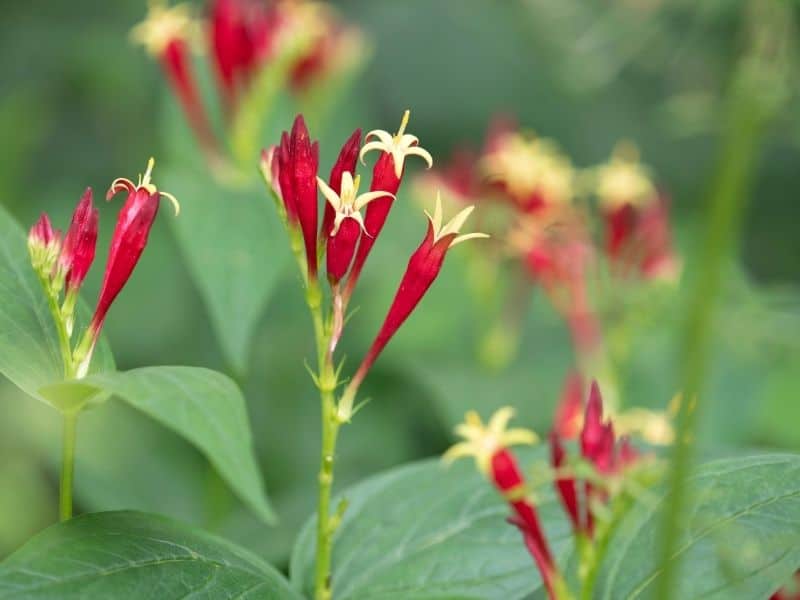
Annual Flowers that Start with I
1. Iceland poppy (Papaver nudicaule)
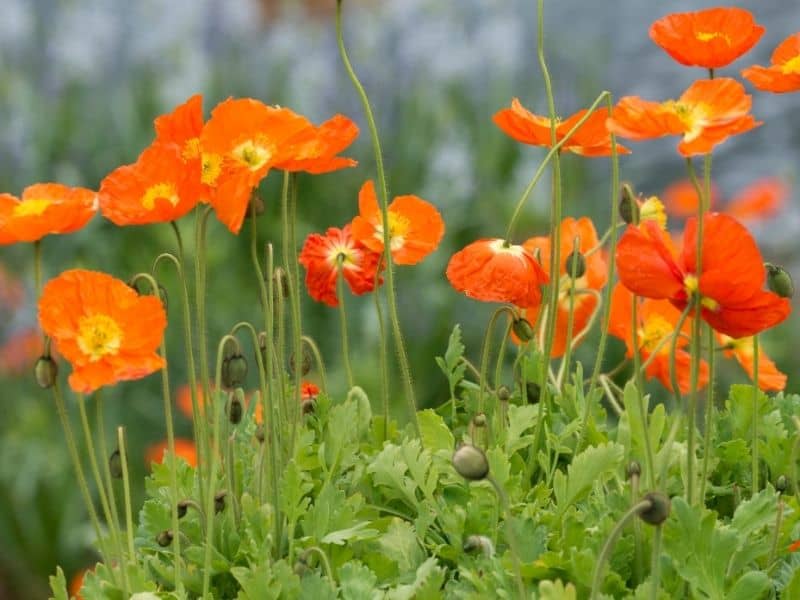
In a unique twist, the Iceland poppy grows as a perennial in the colder areas of USDA zones 1-4 and as an annual in warmer regions (zones 5-10). This arctic native of North America and Eurasia prefers well-draining sandy or loamy soil and full sun.
Direct sow seeds in the fall for papery orange blooms from late spring through summer.
2. Impatiens (Impatiens sp.)
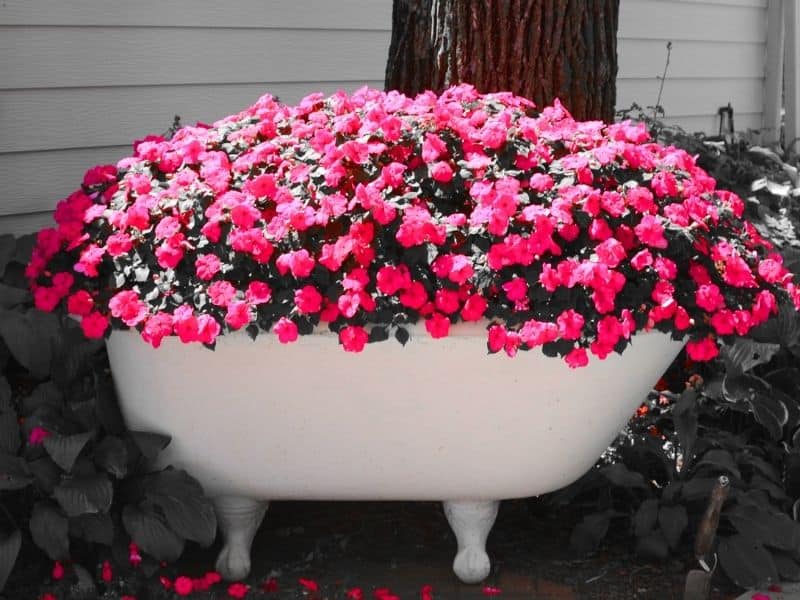
Available in a variety of colors, this popular shade garden flower produces a show of blossoms throughout the growing season with no need for deadheading. At just one to three feet high, impatiens are perfect for tucking into gaps around perennials.
These easy-to-grow tropical plants prefer rich, well-draining soil and grow equally well in containers and the ground, as long as they receive regular watering and no more than partial sun.
3. Indian blanket (Gaillardia pulchella)
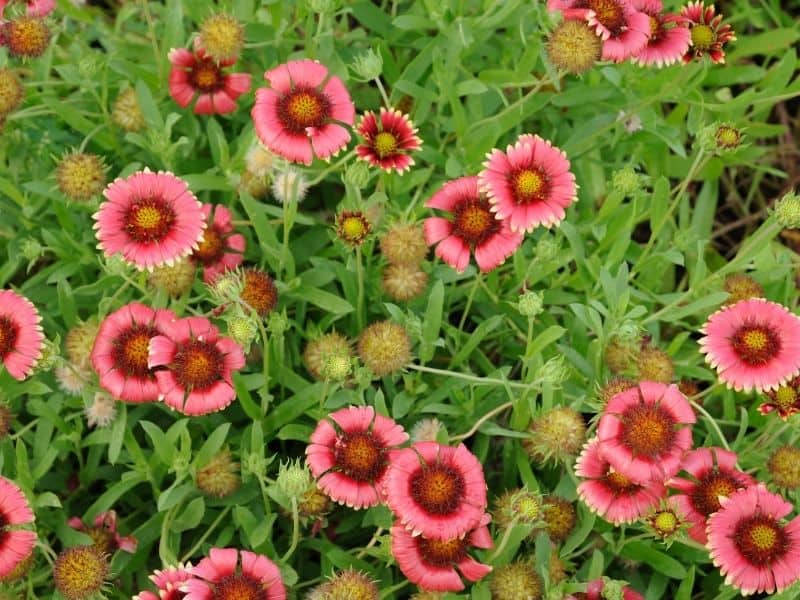
This native wildflower boasts showy, daisy-like flowers with brown centers and yellow-tipped red petals from late spring until early fall. Although typically an annual, Indian blanket may grow as a short-lived perennial in warm coastal areas, and it will happily reseed under ideal conditions.
Indian blanket thrives in full sun and average, well-draining soil, with a preference for sandy soil.
4. Indian paintbrush (Castilleja sp.)
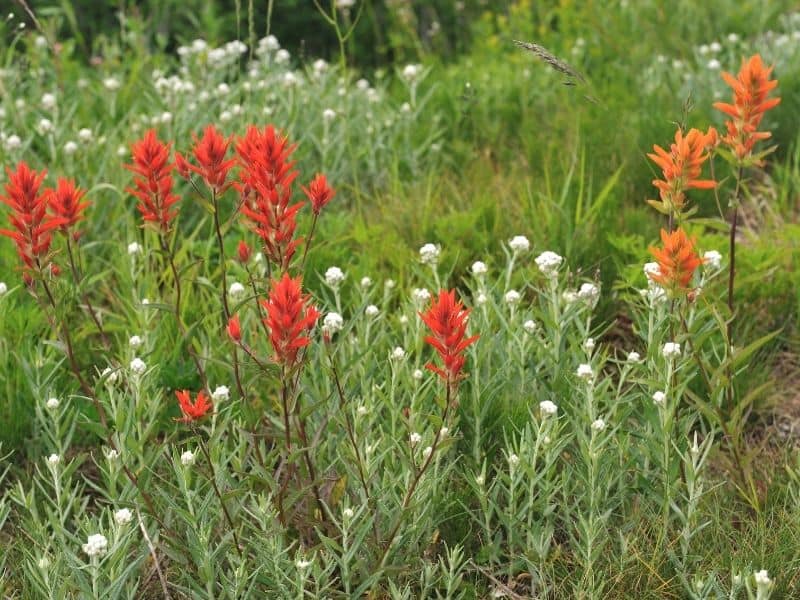
With more than a hundred species in the genus Castilleja, Indian paintbrush can be found growing wild across the contiguous U.S. and Canada. Clusters of bright red or orange bracts surrounding the unremarkable flowers give the plant the appearance of having been dipped in paint, hence its colorful name.
Technically a biennial, Indian paintbrush will put forth colorful bracts in the second spring and summer, followed by seedpods that fall. In ideal conditions, it will self-seed. Ideal conditions include full sun and well-draining soil, with a preference for wildflower meadows or cottage gardens over manicured beds.
5. Ivy geranium (Pelargonium peltatum)
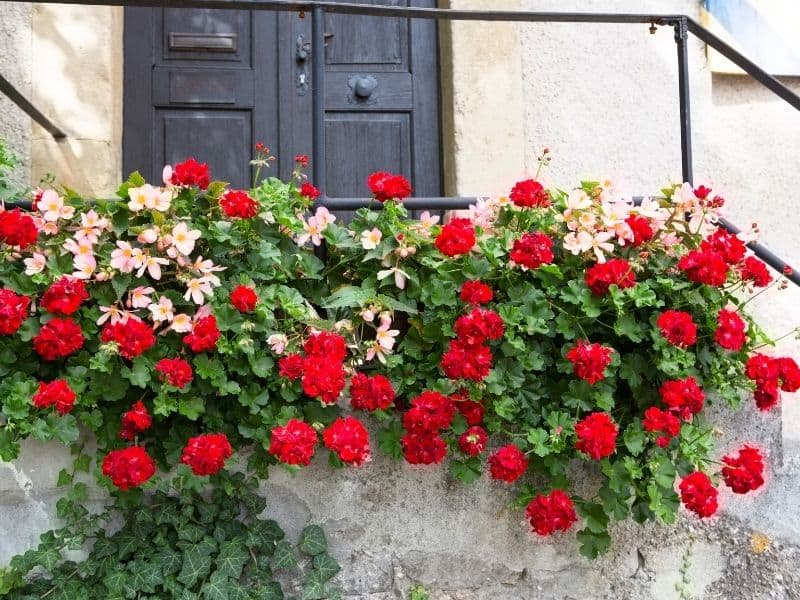
As the name suggests, ivy geranium has a trailing habit and leaves resembling ivy foliage. Its tight, rounded clusters of flowers bloom in shades of white, lavender, pink, or red throughout the growing season. For the full effect, plant ivy geraniums in hanging baskets, window boxes, raised beds, or other areas where it can cascade over an edge.
Ivy geraniums prefer full to part sun and average to rich, well-draining soil. They should be watered regularly but will tolerate some drought once established.
Perennial Flowers that Start with I
6. Ice plant (Delosperma sp.)
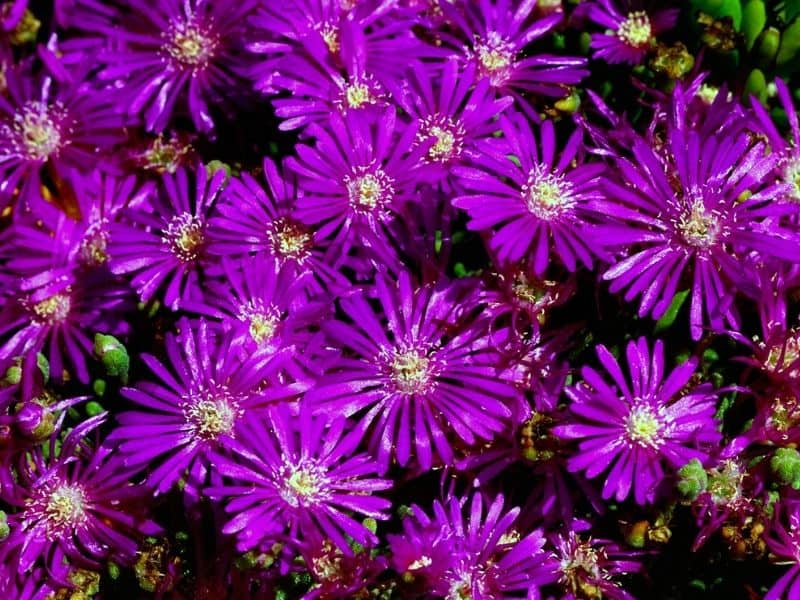
Perfect for adding color to slopes, rock gardens, retaining walls, and other well-draining areas, the ice plant becomes covered with cheerful pink flowers from late spring through early summer. This attractive groundcover also features needlelike succulent foliage for added interest throughout the growing season.
Ice plants thrive in full sun and soil with excellent drainage; sandy soil is preferred. They also do well in containers and raised beds.
7. Indian pink (Spigelia marilandica)
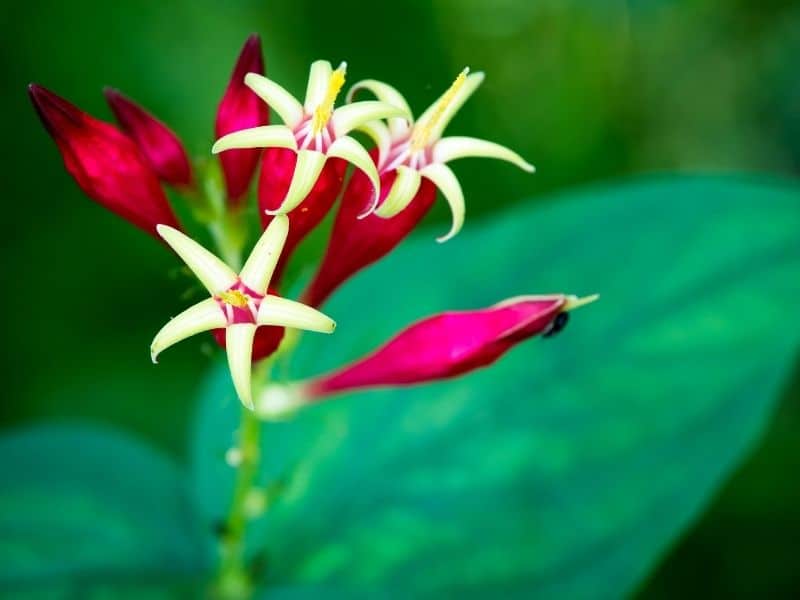
This tropical-looking flower has red tubular blossoms that are startlingly yellow inside. However, Indian pink is actually native to North America, and this easy-to-grow wildflower attracts bees, butterflies, and hummingbirds while repelling deer and rabbits.
A woodland plant, Indian pink grows best in part to full shade and rich, moist, well-draining soil. It works equally well in a wide variety of settings, including cottage gardens, tropical gardens, woodland gardens, and butterfly gardens.
8. Iris (Iris sp.)
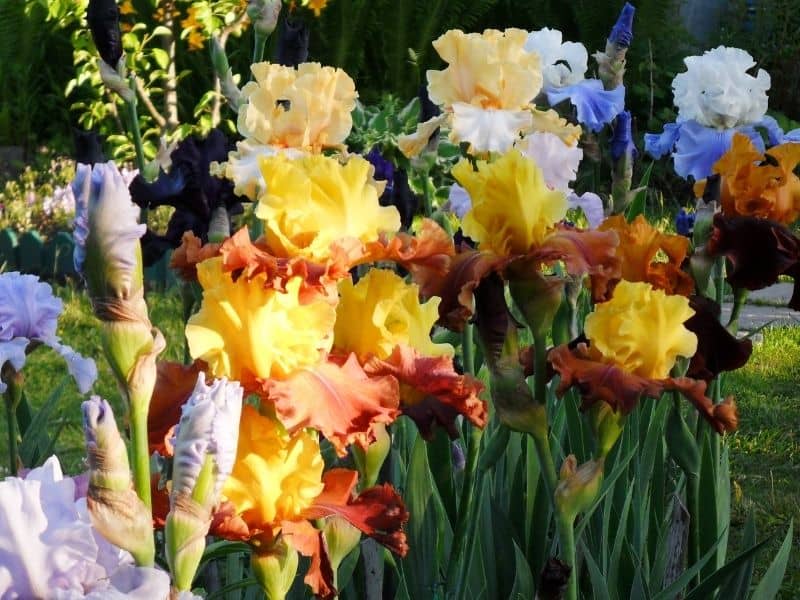
From six inches high to five feet tall and from deep purple to white, irises come in a wide range of sizes, colors, shapes, and bloom times. The most common is the bearded iris, though there are also beardless and aril, a desert cultivar with distinct veins and dark spots, as well as hybrid types.
All irises require at least six to eight hours of sunlight each day, and most prefer well-draining soil, though a few will grow in moist conditions.
9. Irish moss (Sagina subulata)
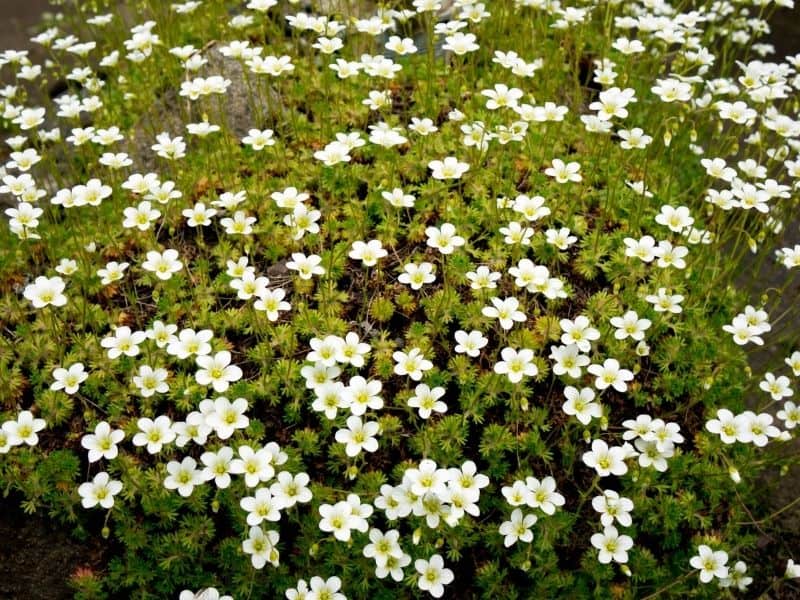
Well-loved as an excellent groundcover, Irish moss grows to just one inch high but slowly creeps to form a soft carpet of deep green, ferny foliage that doesn’t mind being walked on occasionally. In the spring, pretty white flowers bloom and put off a light fragrance.
Add this barefoot-friendly plant to rock gardens, containers, fairy gardens, and walkways. Irish moss thrives in average, well-draining soil and full sun, though it will appreciate afternoon shade in the heat of Southern summers.
10. Italian aster (Aster amellus)
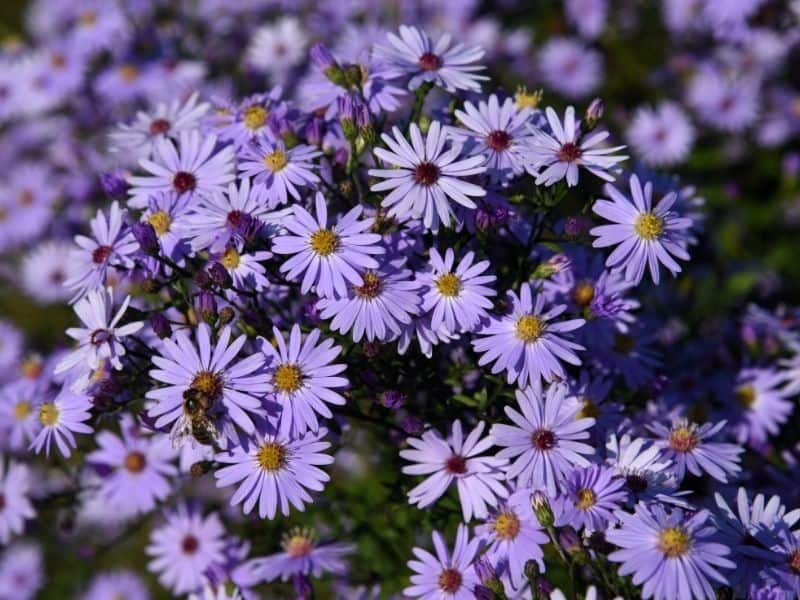
This early-blooming aster has a neat, compact habit and produces an abundance of starry, lavender flowers from late summer into fall. Asters attract pollinators and birds, making them a perfect addition to butterfly gardens as well as cottage gardens, prairies, borders, and cut flower gardens.
Plant Italian asters in full sun in average, well-draining soils. Though they appreciate medium moisture when first planted, Italian asters become drought tolerant once established.
The next time you walk through your garden, take a moment to appreciate the subtler details of a plant or two. And if you haven’t yet established your garden or have a few gaps to fill, perhaps the list above of intriguing flowers can give you a place to start.
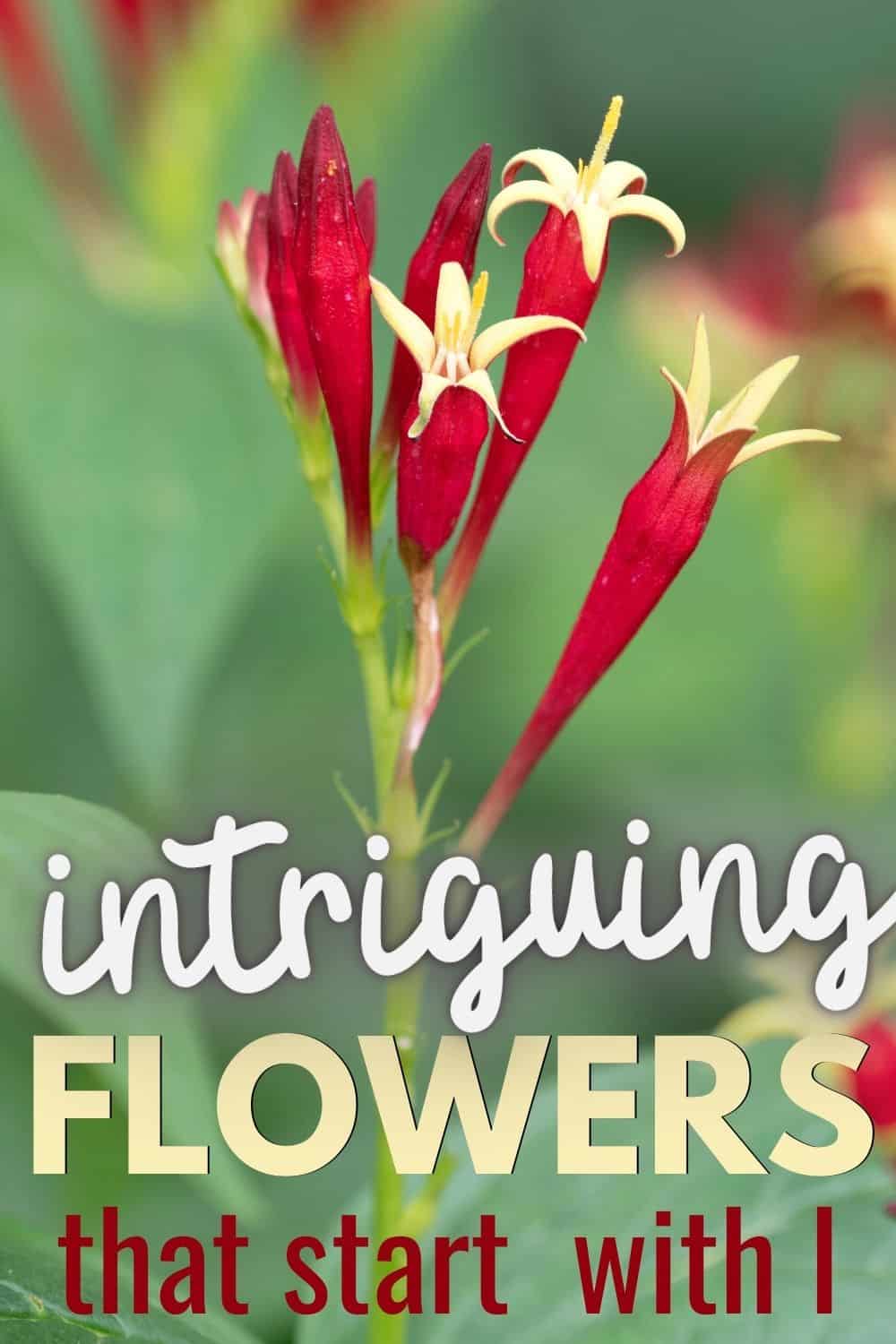

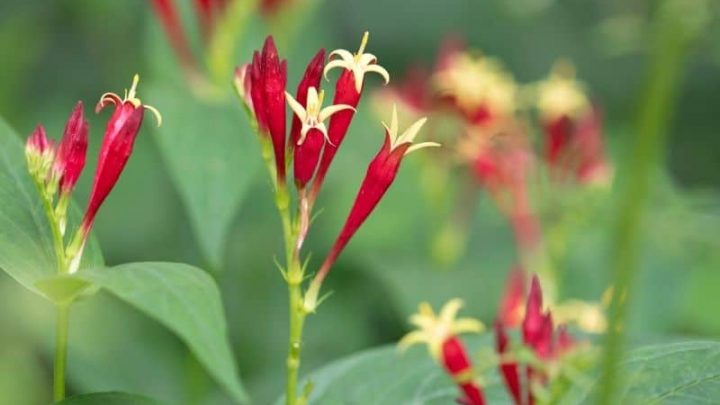

Beautiful Flower Garden Ideas
Tuesday 23rd of February 2021
[…] 10 Intriguing Flowers that Start with I […]